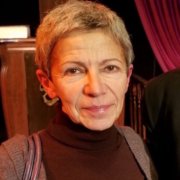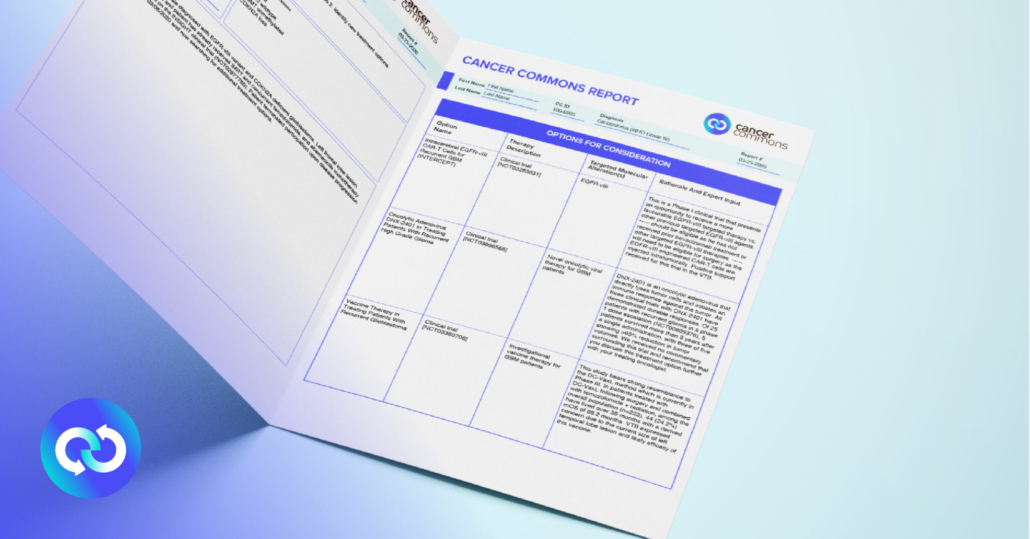Just Diagnosed with Advanced Lung Cancer: What Now?

Curious Dr. George
Cancer Commons Contributing Editor George Lundberg, MD, is the face and curator of this invitation-only column.

Howard (Jack) West, MD
Associate Clinical Professor in Medical Oncology and Executive Director of Employer Services at City of Hope Comprehensive Cancer Center
A new cancer diagnosis is overwhelming. Patients often ask their doctors, “What would you do if you were me?” Here, our Curious Dr. George asks lung cancer expert Howard (Jack) West, MD, how he would handle his own diagnosis of advanced lung cancer. Dr. West is a Princeton- and Harvard-educated oncologist with additional training and experience in Boston and Seattle focusing on lung cancer. He is now an Associate Clinical Professor in Medical Oncology and Executive Director of Employer Services at City of Hope Comprehensive Cancer Center in Duarte, California.
Curious Dr. George: What would you do if you personally were discovered on a routine chest X-ray to have a unilateral pleural effusion which was found by cytopathology to contain mixed squamous and adenocarcinoma cells? How would you proceed?
Dr. West: Though I’m a never-smoker, we know that is no guarantee of immunity from lung cancer, the cancer type I’ve focused on for the past two decades. Perhaps I develop a persistent cough and worsening shortness of breath over a few months. I get a chest X-ray that shows a large right pleural effusion, and a same-day chest CT confirms this and bilateral lung nodules, perhaps along with several enlarged right hilar and mediastinal lymph nodes. The effusion is drained, and the pathologist gives my doctor and me the immediate feedback that this is a carcinoma, and we quickly learn that the immunohistochemistry profile is consistent with an adenocarcinoma. Where do we go from here?
My next step is to order broad next-generation sequencing, which may entail a new biopsy, either CT-guided or an endobronchial ultrasound and biopsy of whatever is accessible. We need sufficient tissue to send off for broad molecular testing that includes a look for all of the growing collection of lung cancer “driver mutations.” These include long-established markers like a mutation in the epidermal growth factor receptor (EGFR) gene or a rearrangement in the anaplastic lymphoma kinase (ALK) gene, but now also a rearrangement in ROS1, mutation of BRAF V600E, a MET exon 14 skipping mutation, RET fusion, or fusion in the TRK gene. These genetic alterations are found in approximately 0.5% to 10% each in patients with non-small cell lung cancer (NSCLC) and far more commonly in patients with a non-squamous NSCLC tumor. They all have FDA-approved oral targeted therapies with efficacy that generally exceeds what we could expect with our best standard non-targeted approaches involving immunotherapy with or without chemotherapy. Most of these targeted therapies also better tolerated and can work for a prolonged period that may reach the range of years.
This mutation testing typically takes at least 2 to 4 weeks, but the importance of identifying one of these mutations, when present, makes it critical to seek this information at the time of initial diagnosis. Moreover, in addition to the array of markers we currently have targeted therapies for, we expect an FDA approval for an inhibitor of KRAS G12C-mutated NSCLC, seen in about 12% to 13% of advanced NSCLC, in the coming months; all in all, comprehensive molecular testing guides us to an optimal targeted therapy for at least 20% of patients, and that proportion will continue to increase as new targets with effective therapies become available.
In the hypothetical scenario of my own diagnosis, as this testing is being done we’re also testing for tumor PD-L1 expression, which identifies tumors most likely to respond well to immune checkpoint inhibitors, potentially sparing patients first line chemotherapy if they don’t receive a targeted therapy. And I’d seek to complete imaging with a PET/CT and brain MRI, in order to identify whether the cancer has spread to other sites beyond those already identified.
Once these tests are completed, I’d prioritize a targeted therapy if my tumor harbors a driver mutation. If not, I’d generally favor pembrolizumab monotherapy if my cancer is among the approximately 28% to 30% that demonstrates high tumor PD-L1 expression (greater than 50%). Otherwise, if my cancer has neither a driver mutation nor high tumor PD-L1 expression, I’d generally favor a platinum-based chemotherapy doublet with pembrolizumab—an option I would also favor in a patient with a tumor that doesn’t harbor a driver mutation and with high tumor PD-L1 if that patient had many cancer-related symptoms or otherwise showed a pattern of rapid progression in the early weeks of the workup. Though I’d be happy to sequence the immunotherapy with subsequent chemotherapy in patients in whom I’m confident they will still have the performance status to tolerate platinum doublet chemotherapy after progressing on chemotherapy, I’d favor “front-loading” with chemo-immunotherapy together in patients in whom I’m concerned I may only have “one shot on goal.”
Dr. West can be reached at JackWestMD@gmail.com or on Twitter at @JackWestMD.
Related Links:
Molecular Testing Guides Treatment for Claudius’s Lung Cancer
What’s New in Immunotherapy for Non-Small Cell Lung Cancer?
Comprehensive Molecular Testing Needed for Stage IV Lung Cancer
***
Copyright: This is an open-access article distributed under the terms of the Creative Commons Attribution License, which permits unrestricted use, distribution, and reproduction in any medium, provided the original author and source are credited.












